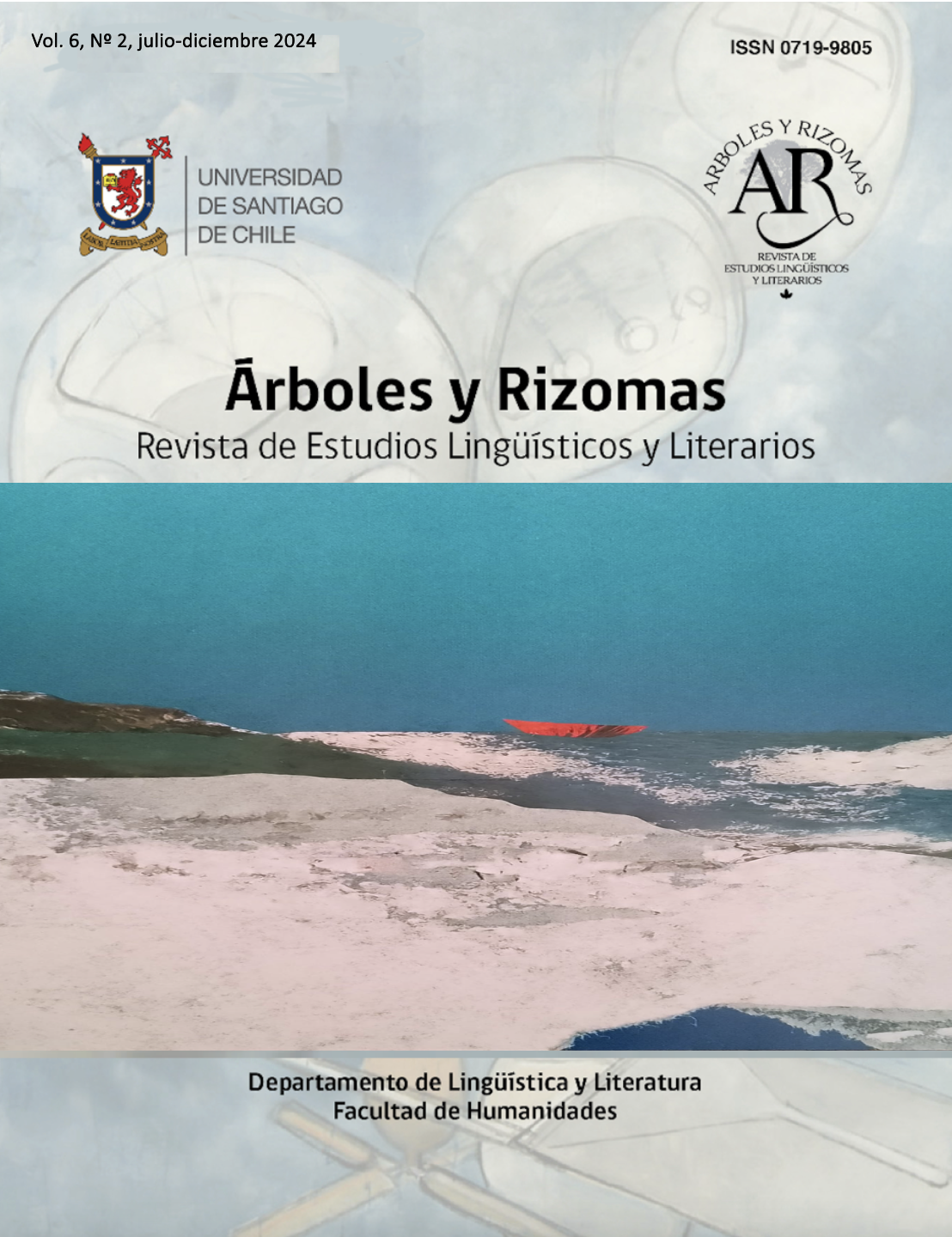Empregando a metodologia R2L com translinguagem para apoiar a produção escrita do gênero rotina diária
DOI:
https://doi.org/10.35588/ayr.v6i2.6794Palavras-chave:
Reading to Learn (R2L), translinguagem, rotinas diárias, Linguística Sistêmico-Funcional (LSF), pesquisa-ação pedagógicaResumo
Este artigo apresenta um projeto de pesquisa de ação pedagógica realizado em uma instituição chilena de ensino superior que explora o ensino da produção escrita em inglês como língua estrangeira (EFL). Ele examina a aplicação da metodologia Reading to Learn (R2L), com base nos princípios da Linguística Sistêmico-Funcional (SFL), que oferece suporte sistemático para que os alunos produzam uma variedade de gêneros. A intervenção consiste em duas fases nas quais a metodologia R2L é empregada para ensinar o gênero rotina diária. Neste estudo, a metodologia R2L se concentra em permitir que os alunos desenvolvam os recursos linguísticos necessários para a produção de rotinas diárias na primeira e na terceira pessoa do singular. Para facilitar isso, a intervenção utiliza duas ferramentas de ensino: as etapas da metodologia R2L e a translinguagem. Os resultados revelam que a metodologia R2L, juntamente com a translinguagem, melhorou significativamente a capacidade dos alunos de produzir rotinas diárias bem estruturadas e com propósito, incorporando uma variedade de escolhas linguísticas.
Downloads
Referências
Achugar, M., & Carpenter, B. D. (2012). Developing disciplinary literacy in a multilingual history classroom. Linguistics and Education, 23(3), 262-276.https://doi.org/10.1016/j.linged.2012.05.003
Bruner, J. S. (1978). The role of dialogue in language acquisition. In A. Sinclair, R. J. Jarvelle & W. J. M. Levelt (Eds.), The Child's Concept of Language. Springer-Verlag.
Byrnes, H., Maxim, H. H., & Norris, J. M. (2010). Realizing advanced foreign language writing development in collegiate education: Curricular design, pedagogy, assessment. The Modern Language Journal, 94(1), 1–235.https://doi.org/10.1111/j.1540-4781.2010.01136.x
Canale, M., & Swain, M. (1980). Theoretical Bases of Communicative Approaches to Second Language Teaching and Testing. Applied Linguistics, 1(1), 1-47.https://doi.org/10.1093/applin/I.1.1
Cancino, M., & Díaz, G. (2020). Exploring the Code-Switching Behaviours of Chilean EFL High School Teachers: A Function-Focused Approach. Profile: Issues in Teachers’ Professional Development, 22(2), 115-130.https://doi.org/10.15446/profile.v22n2.81152
Council of Europe (2020). Common European Framework of Reference for Languages: Learning, Teaching, Assessment. Council of Europe Publishing.https://www.coe.int/en/web/common-european-framework-reference-languages
De Oliveira, L., & Iddings, J. (2014). Genre pedagogy across the curriculum. Equinox.
Dreyfus, S., Humphrey, S., Mahboob, A., & Martin, J. R. (2016). Genre pedagogy in higher education: The slate project. Palgrave Macmillan.
García, O., & Kleyn, T. (Eds.) (2016). Translanguaging with Multilingual Students. Learning from Classroom Moments. Routledge.
García, O., & Wei, L. (2014). Translanguaging: Language, Bilingualism and Education. Palgrave Macmillan.
Gibbons, P. (2003). Mediating Language Learning: Teacher Interactions with ESL Students in a Content-Based Classroom. TESOL Quarterly, 37(2), 247–273.https://doi.org/10.2307/3588504
Halliday, M. A. K. & Matthiessen, C. M. I. M. (2004). An introduction to functional grammar (3rd Ed.). Arnold.
Halliday, M. A. K., & Matthiessen, C. M. I. M. (2014). Halliday’s Introduction to Functional Grammar (4th ed.). Routledge.
Herazo Rivera, J. D., Becerra, T., García-Montes, P., Sagre Barbosa, A., Anaya, C., & Pastrana, J. (2021). Reading to Learn and EFL Students’ Construction of Spoken Biographical Recounts. Íkala, Revista de Lenguaje y Cultura, 26(1), 41-60.https://doi.org/10.17533/udea.ikala.v26n01a06
Humphrey, S., Droga, L., & Feez, S. (2012). Grammar and Meaning. The Primary English Teaching Association Australia (PETAA).
Kemmis, S., & McTaggart, R. (Eds.). (1988). The action research planner (3rd ed.). Deakin University Press.
Martin, J. R., & Rose, D. (2007). Working with Discourse: Meaning Beyond the Clause (2nd ed.). Continuum.
Martin, J. R., Matthiessen, C. M. I. M., & Painter, C. (2010). Deploying Functional Grammar. Commercial Press.
Menco-Haeckermann, V. (2021). From Curriculum Demands to Genre Pedagogy: Bilingual Adaptation of Reading to Learn for an L2 Lesson Planning. Signo, 46(86), 168-182. https://doi.org/10.17058/signo.v46i86.16522
Mendoza, D. (2022). Using a Reading to Learn (R2L) Adaptation to Support Students’ Language Learning in the Production of Spoken Daily Routines [Master's Thesis, Pontificia Universidad Católica de Chile]. Repositorio UC. https://doi.org/10.7764/tesisUC/LET/63721
Norton, L. (2009). Action Research in Teaching and Learning. A practical guide to conducting pedagogical research in universities. Routledge.
Rose, D., & Martin, J. R. (2012). Learning to Write, Reading to Learn: Genre, knowledge and pedagogy in the Sydney School. Equinox.
Rose, D. (2019). Reading to Learn: Accelerating learning and closing the gap. Reading to Learn.
Seidlhofer, B. (2009). Understanding English as a Lingua Franca. Oxford University Press.
Troyan, F., Herazo, D., & Ryshina-Pankova, M. (2022). SFL pedagogies in language education: Special issue introduction. System, 104, 102694.https://doi.org/10.1016/j.system.2021.102694
Vygotsky, L. S. (1978). Mind in society: The development of higher psychological processes. Harvard University Press.
Downloads
Submetido
2024-07-30Publicado
Edição
Secção
Licença
Direitos de Autor (c) 2024 Diego Mendoza Godoy

Este trabalho encontra-se publicado com a Licença Internacional Creative Commons Atribuição 4.0.






